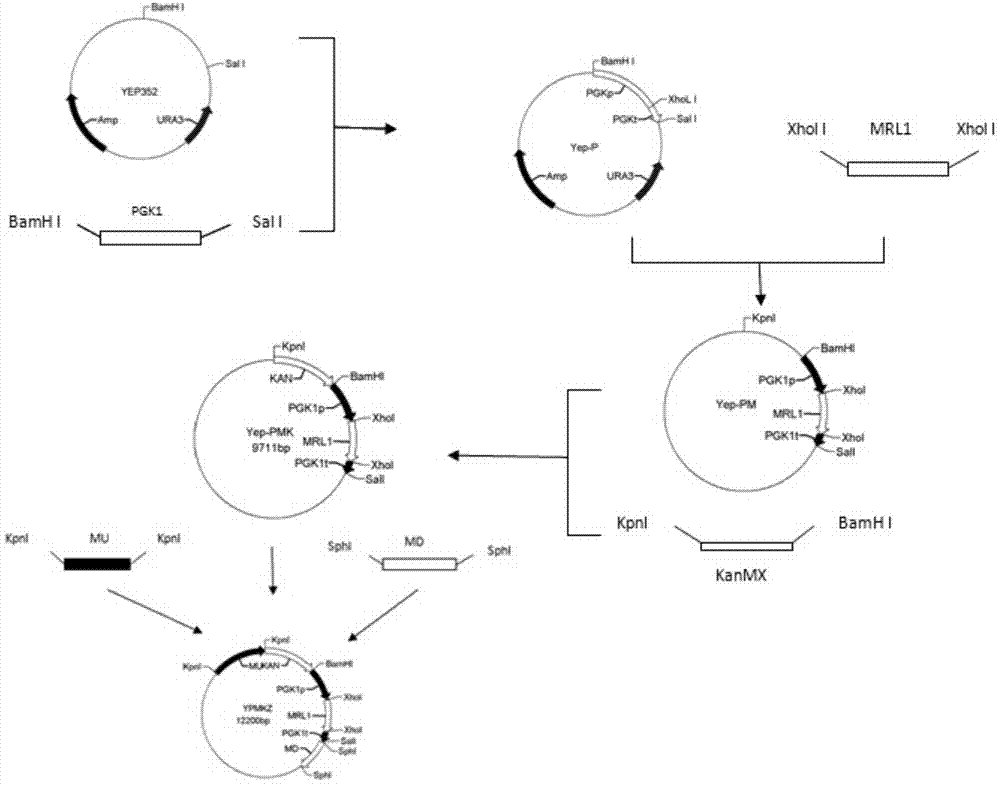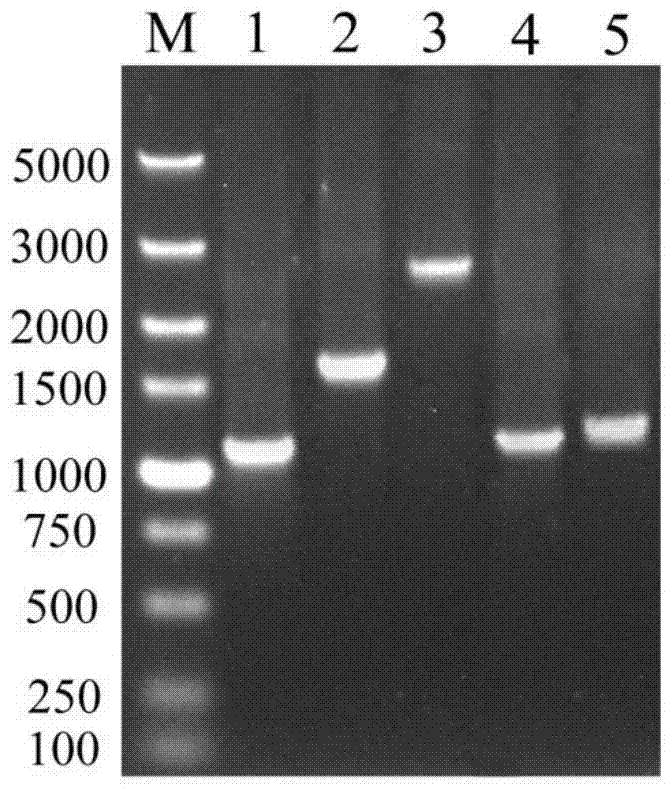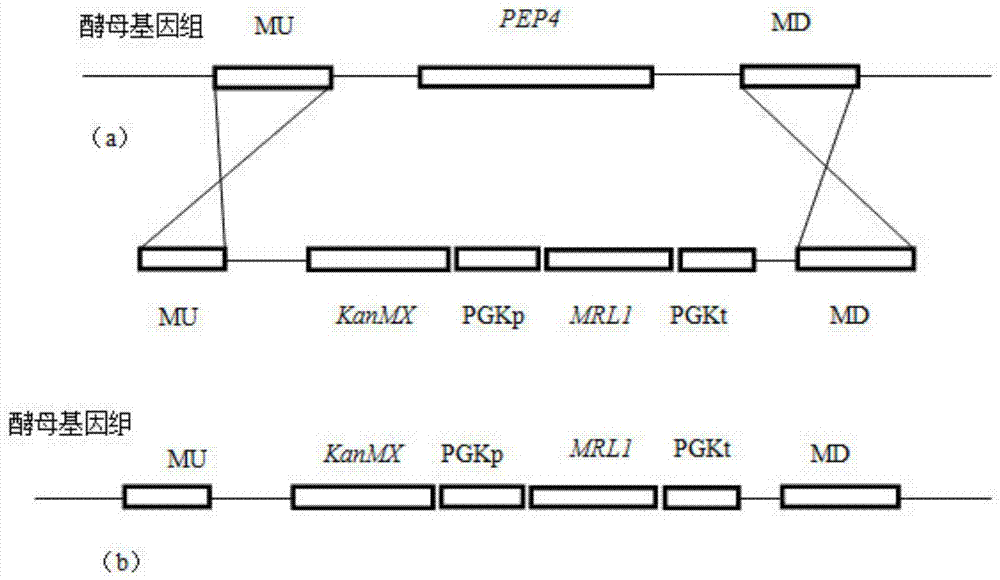A kind of exocrine yeast strain with low protease A under stress conditions and its construction method
A technology of Saccharomyces cerevisiae strain and protease, which is applied in the field of bioengineering to achieve the effect of improving foam retention
- Summary
- Abstract
- Description
- Claims
- Application Information
AI Technical Summary
Problems solved by technology
Method used
Image
Examples
Embodiment 1
[0044] Example 1: Construction of PEP4 gene knockout and MRL1 gene overexpression strain
[0045] (1) Construction of Yep-PMKZ plasmid
[0046] The construction process of the recombinant plasmid Yep-PMKZ is as follows figure 1 shown.
[0047] ① Using the pPGK1 plasmid as the template, PCR amplified the strong promoter PGK1p-PGK1t gene fragment;
[0048] Upstream primer PGK-U: CGC GGATCC TCTAACTGAT CTATCCAAAACTGA (SEQ ID NO: 3)
[0049] Downstream primer PGK-D: CGC GTC GAC TAACGAACGCAGAATTTTC (SEQ ID NO: 4)
[0050] The underlined part is the restriction site
[0051] PCR reaction conditions: 95°C for 5 min; 94°C for 45s; 61°C for 1min; 72°C for 100s, 30 cycles; 72°C for 10 min, 0.8% agarose gel electrophoresis to identify the amplified product;
[0052] PCR reaction system (20μL)
[0053] PCR buffer
dNTP
Upstream and downstream primers
template
Taq enzyme
DdH2O
total capacity
2.0 μL
1.5μL
1.0 μL each
1.0μL
0.5μL ...
Embodiment 2
[0088] Example 2: Comparison of intracellular and extracellular protease A activity
[0089] Beer fermentation experiments were carried out on two yeast strains RY1 and RPMKZ. After the fermentation, the fermentation broth was centrifuged to collect bacterial cells, and the intracellular protease A activity was measured after cell wall breaking treatment, and the extracellular protease A activity of the fermentation broth was measured at the same time. The results are shown in Table 1. It was found by observation that the intracellular enzyme activity of the recombinant strain RPMKZ overexpressing the MRL1 gene with a single PEP4 gene deletion was similar to that of the starting strain, but the extracellular enzyme activity was reduced to 54% of the starting strain. This is because although knocking out one copy of the PEP4 gene reduces the total expression of proteinase A, overexpression of the vacuolar sorting receptor gene MRL1 on the basis of knocking out PEP4 can increase...
Embodiment 3
[0092] Example 3: Fermentation Performance - Comparison of Alpha-Amino Nitrogen Changes
[0093] α-Amino nitrogen is the main nitrogen source for yeast growth and metabolism. This study investigated the differences in the assimilation and metabolism of α-amino nitrogen between yeast strains RY1 and RPMKZ. like Figure 5 From the beginning of the main fermentation, the concentration of α-amino nitrogen in the fermentation broth showed an obvious decreasing trend, and at the end of the fermentation, the changing trend of α-amino nitrogen became stable. This is because in the main fermentation period, yeast growth and metabolism use a large amount of α-amino nitrogen, so the rate of assimilation and absorption is very fast. At the end of fermentation, the number of yeast reached a stable value, and the assimilation rate of α-amino nitrogen also became stable. The study showed that the concentration of α-amino nitrogen of the two strains did not change much during the beer ferme...
PUM
 Login to View More
Login to View More Abstract
Description
Claims
Application Information
 Login to View More
Login to View More - R&D
- Intellectual Property
- Life Sciences
- Materials
- Tech Scout
- Unparalleled Data Quality
- Higher Quality Content
- 60% Fewer Hallucinations
Browse by: Latest US Patents, China's latest patents, Technical Efficacy Thesaurus, Application Domain, Technology Topic, Popular Technical Reports.
© 2025 PatSnap. All rights reserved.Legal|Privacy policy|Modern Slavery Act Transparency Statement|Sitemap|About US| Contact US: help@patsnap.com



